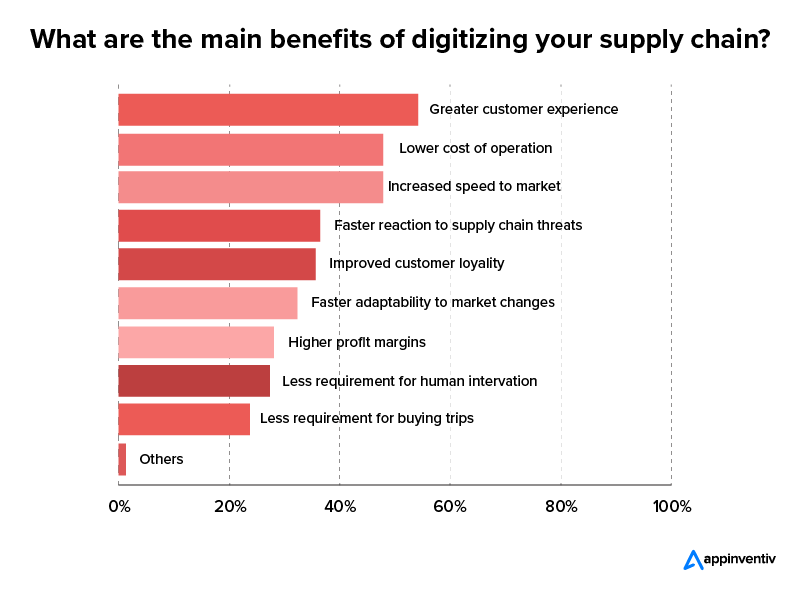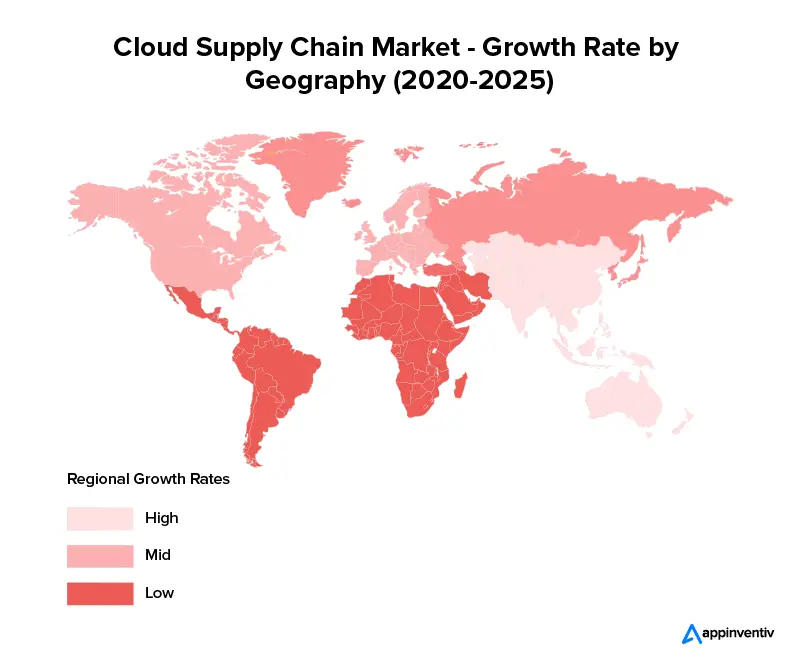How to Overcome Challenges by Implementing Technology in Supply Chain Management5 Comments16 March 2024
Digitalization is visibly transforming almost every space, but perhaps the biggest impact that the concept is making is in the logistics and manufacturing sectors. Standing on the edge of growing globalization, elevated product complexity, and ever-changing customer demands, companies are using an advanced set of technology in the supply chain to expand their business innovation. The recent pandemic and war situations have brought an imbalance in the demand and supply of goods, thus affecting the supply chain technology globally. But these dire situations have also elevated the need for companies to embrace tech-led supply chain management solutions to handle the challenges, as the probability of lockdowns or another war can’t be overlooked. With companies getting cautious about an unpredictable future, it is not surprising to see them investing in intelligent supply chain optimization technologies. According to Gartner, by 2023, 50% of global eCommerce companies will invest in AI, a real-time supply chain, and advanced analytical solutions. An investment they want to make for solving the pestering issues of the global supply chain disruption. Problems in the current supply chain technology 1. Material and labor shortages According to the Institute of Supply Chain Management report, every crucial commodity – human and material – is scarce or expensive, leading to complexities and shortages in the industry. A shortage that calls for the inclusion of next-gen technology in supply chain management. 2. Increasing freight costs 3. Port congestion While the congestion in ports is not a new issue, the National Customers Brokers & Forwarders Association of America (NCBFAA) predicts that 2022 might witness long wait times and supply chain blockages. And in response to this, we will see greater use of technology in supply chain management. 4. Limitations in demand forecasting With the unprecedented demand growing even today, addressing them continues to be an issue. To solve this, the leaders are relying on the present-day data to predict the year ahead and set benchmarks from inventory to pricing and budget. So these are the top challenges that the supply chain industry continues to follow even after the COVID-driven digitalization. The solution to these lies in using a range of new technology in the supply chain. Let us look into them next. The most impactful set of information technology in supply chain management
Technology in the supply chain is fast changing. What once used to be restricted to paperwork and excels is today using smart technologies like AI, Internet of Things (IoT) , Blockchain, RPA, etc., to make the processes efficient and transparent. Let us get down to the list of technologies and how they are helping to solve the challenges in supply chain management. IoT It can be expected from manufacturers and transportation companies to spend on IoT deployments, specifically for supporting the manufacturing operations and management of production asset monitoring and management of freight fleet. By enabling location tracking, monitoring the weather conditions, traffic patterns, etc., businesses will be looking at combining IoT and artificial intelligence in supply chain management for a range of use cases. For example, at the back of this information, the suppliers can reroute the delivery to a nearby distribution center or dispatch a repair crew to address issues in real-time. Blockchain
Blockchain in supply chain management, at the back of its immutability factor, establishes the audit trail, which is much more efficient than traditional tracking approaches like email or book-keeping. As a result of this, the biggest blockchain in supply chain example lies in enabling track-and-trace use cases that help businesses look into the chain of goods’ custody. This, in turn, helps find counterfeit items and fraud instances, highlight the at-risk suppliers, ensure that the regulatory requirements are met, and build transparency around the origin and goods’ movement. All of this makes blockchain technology in the supply chain one of the most profitable investments in the domain. AI
Every modern supply chain network comes with a massive range of data which helps unlock insights into the otherwise complex global supply chain technology. By incorporating a combination of technology in supply chain management and logistics like AI, predictive analytics, and machine learning, companies are able to automate their warehouse operations, better their delivery times, manage inventory proactively, optimize the sourcing relationships, and build new experiences which better users’ satisfaction and increase sales. Using predictive methods and algorithms of artificial intelligence in supply chain, businesses are able to use large data sets and get insights on a microscopic level – all with almost zero human involvement. This is one of the biggest reasons why businesses are using AI as a key supply chain and logistics technology. Robots and automation The combined capability of humans and robots is leading to large-scale deployments all through automated supply chain management solutions. According to IDC, 65% of the warehouse activities will be using situational data analytics and robots by 2023 to then aid with the optimization of storage, growing the warehouse capacity by more than 20% and lowering the work order processing efforts by half. Cloud computing
The impact of technology in supply chain management can be best seen in bringing the Cloud and AI systems together, which makes use of the market indicators and past trends to achieve the following processes:
The addition of these technologies in the supply chain domain is leading to a situation where businesses are able to predict demand, make the supply chain process transparent, and lower the delivery timelines. An event that has led to multiple trends showcasing the impact of technology in supply chain management. Let us look into those supply chain technologies trends as we conclude the article. The trends of new technology in supply chain Here are some trends that Gartner identified in their ‘Supply Chain Digital Transformation’ report.
These supply chain disruption trends that we saw above are only the surface-level transformation that the space is about to witness in the coming years. With the growing adoption of next-gen technologies in the domain, we will soon enter a time where businesses, especially manufacturing and logistics, will become more efficient. For the goods-driven sector, it becomes crucial to invest in the right set of technologies – something that supply chain app experts like Appinventiv can help with. We carry extensive experience in digital transformation consulting and engineering around building supply chain solutions. Our team of development experts understands the ins and outs of incorporating next-gen technologies like AI, blockchain, IoT, and robotic process automation – a specialty we use to transform supply chain processes of multiple industries. Recently, we worked with a global manufacturer of heavy construction and mining equipment on an intelligent supply chain software which helped them become more responsive towards their client’s needs. Moreover, the process automation facility we added allowed their employees to put their efforts on other aspects of the job instead of mundane activities, thus increasing their productivity and efficiency. Now that you know how technology in supply chain management can solve pertinent challenges, get in touch with us today and initiate your supply chain journey. |
|
   |





